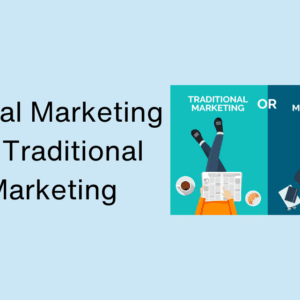Introduction
In the digital age, small businesses have unprecedented opportunities to reach and engage with their target audiences through digital marketing channels. However, navigating the complexities of digital marketing can be daunting for entrepreneurs with limited resources and expertise. In this comprehensive tutorial, we’ll explore effective digital marketing strategies tailored specifically for small businesses. From building a strong online presence to leveraging social media, SEO, content marketing, and email campaigns, we’ll provide actionable insights and practical Strategies for Small Businesses thrive in the digital landscape.
Understanding Digital Marketing for Small Businesses
Before diving into specific strategies, let’s define digital marketing for small businesses and its significance:
- Digital Marketing: Digital marketing encompasses all marketing efforts that utilize digital channels such as websites, search engines, social media, email, and mobile apps to connect with customers and prospects. It includes a wide range of tactics aimed at increasing brand awareness, driving website traffic, generating leads, and ultimately, boosting sales and revenue.
- Significance for Small Businesses: For small businesses, digital marketing levels the playing field, allowing them to compete with larger competitors on a more equal footing. With targeted digital strategies, small businesses can reach their ideal customers cost-effectively, build brand loyalty, and establish a competitive edge in their industry.
Essential Digital Marketing Strategies for Small Businesses
Let’s explore key digital marketing strategies that can help small businesses achieve their goals:
Building a Professional Website:
- Responsive Design: Ensure your website is mobile-friendly and responsive, as a significant portion of internet traffic comes from mobile devices.
- Clear Messaging: Communicate your unique value proposition clearly on your website’s homepage to captivate visitors and encourage exploration.
- User-Friendly Navigation: Make navigation intuitive and straightforward, allowing visitors to find the information they need quickly and easily.
- Call-to-Action (CTA): Include compelling CTAs on your website to prompt visitors to take desired actions, such as contacting you, making a purchase, or subscribing to your newsletter.
Search Engine Optimization (SEO):
- Keyword Research: Conduct thorough keyword research to identify relevant keywords and phrases that your target audience is searching for.
- On-Page Optimization: Optimize your website’s meta tags, headings, content, and images with targeted keywords to improve search engine visibility.
- Quality Content: Create high-quality, informative content that provides value to your audience and attracts organic traffic from search engines.
- Local SEO: Optimize your online presence for local search by claiming your Google My Business listing, obtaining online reviews, and ensuring consistent NAP (name, address, phone number) information across directories.
Content Marketing:
- Blogging: Start a blog on your website and regularly publish informative, engaging blog posts related to your industry, products, or services.
- Visual Content: Incorporate visual content such as images, infographics, and videos into your content marketing strategy to enhance engagement and shareability.
- Guest Blogging: Guest blog on relevant industry websites or invite guest bloggers to contribute to your blog to expand your reach and attract new audiences.
- Content Promotion: Promote your content across various channels, including social media, email newsletters, and online communities, to increase visibility and drive traffic to your website.
Social Media Marketing:
- Platform Selection: Identify the social media platforms where your target audience is most active and focus your efforts on those platforms.
- Content Variety: Share a mix of content types, including blog posts, images, videos, polls, and user-generated content, to keep your social media presence diverse and engaging.
- Consistency: Maintain a consistent posting schedule to keep your audience engaged and build brand awareness over time.
- Community Engagement: Actively engage with your audience by responding to comments, messages, and mentions, and participating in relevant conversations and discussions.
Email Marketing:
- List Building: Build and grow your email list by offering incentives such as discounts, exclusive content, or freebies in exchange for email sign-ups.
- Segmentation: Segment your email list based on demographics, purchase history, or engagement level to deliver targeted and personalized email campaigns.
- Automation: Use email marketing automation tools to streamline your campaigns, automate follow-ups, and send personalized messages based on user behavior.
- Analytics and Optimization: Track key metrics such as open rates, click-through rates, and conversions to measure the effectiveness of your email campaigns and make data-driven improvements over time.
Implementing and Measuring Success
Once you’ve implemented these digital marketing strategies, it’s essential to monitor and measure their effectiveness:
- Analytics: Use tools such as Google Analytics, social media insights, and email marketing platforms to track key performance metrics and analyze the impact of your marketing efforts.
- Iterative Improvement: Continuously evaluate your strategies, experiment with new tactics, and refine your approach based on data insights to optimize results and achieve your business objectives.
Conclusion
Digital marketing offers a wealth of opportunities for small businesses to grow their online presence, attract new customers, and drive revenue. By implementing a comprehensive digital marketing strategy that encompasses website optimization, SEO, content marketing, social media, and email campaigns, small businesses can establish a strong online presence, engage with their target audience effectively, and achieve sustainable growth in today’s competitive landscape. With dedication, creativity, and a focus on providing value to their audience, small businesses can leverage the power of digital marketing to succeed and thrive in the digital age.
Also Read: Exploring Digital Marketing vs Traditional Marketing: Unveiling Key Differences








I’m extremely impressed together with your writing abilities
as neatly as with the format on your blog. Is that
this a paid topic or did you customize it yourself?
Either way keep up the excellent high quality writing, it is uncommon to peer a nice weblog like this one
nowadays. Leonardo AI x Midjourney!